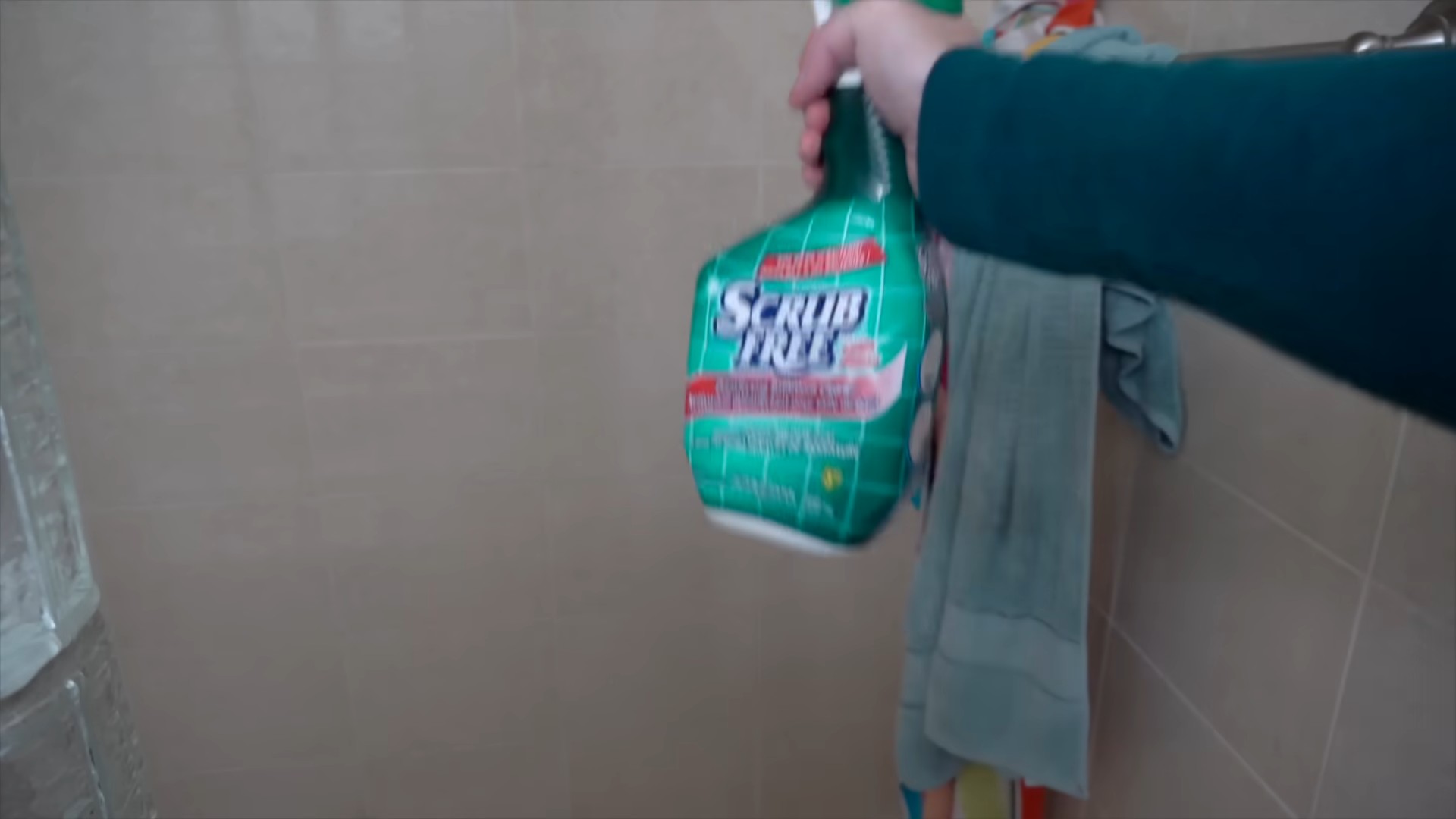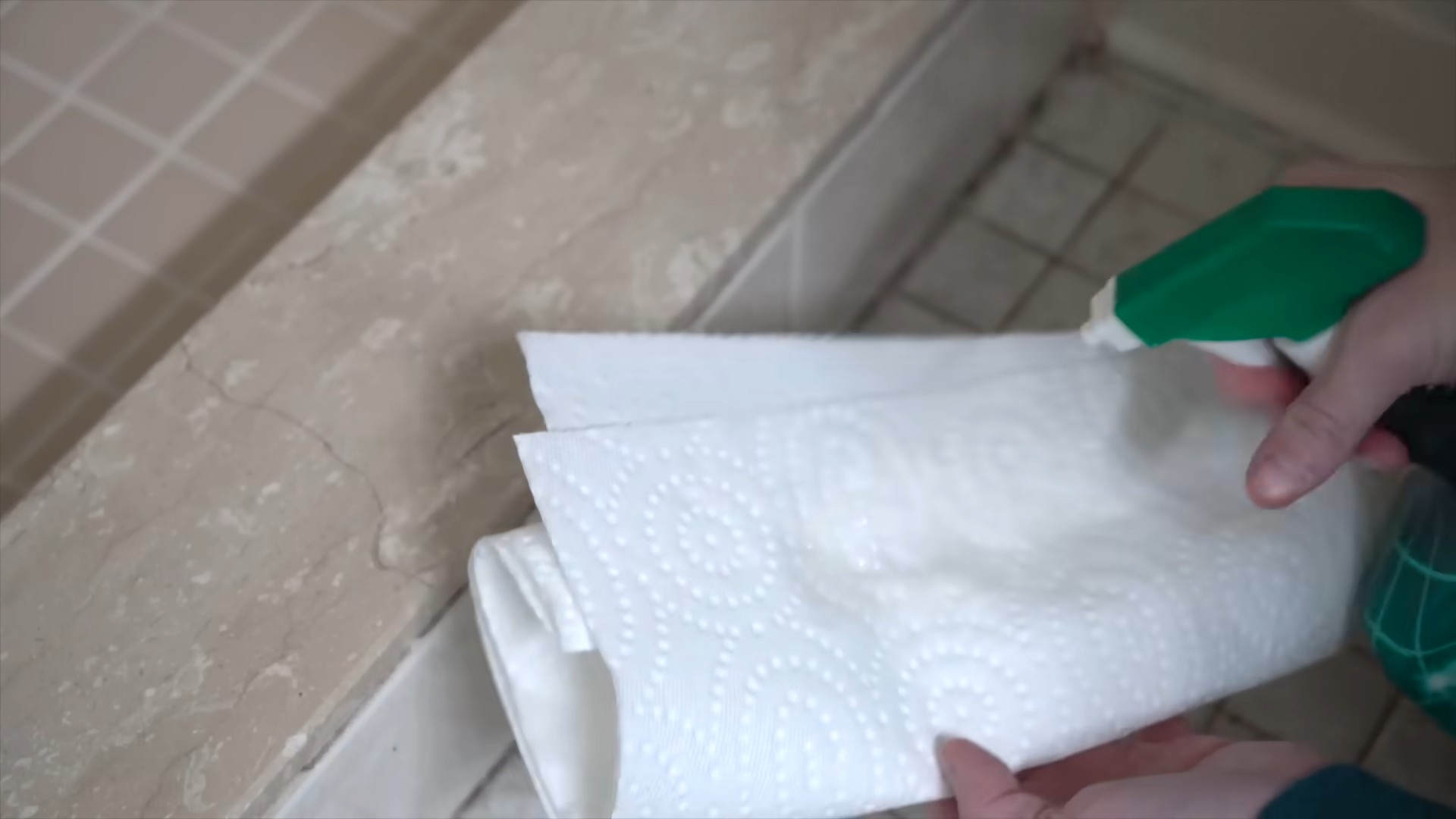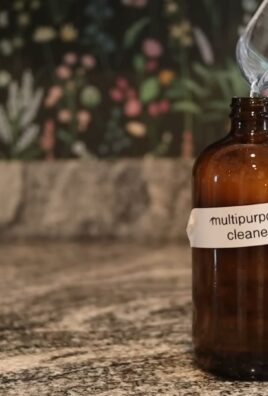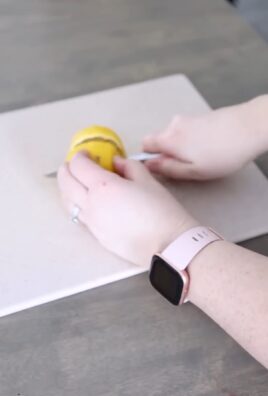Bleach Cleaning Hacks: Unlocking a Sparkling Clean Home
I’ve always loved the feeling of a truly sparkling clean home, but let’s be honest, keeping things spotless can feel like a never-ending battle. That’s why I’m so excited to share some of my favorite bleach cleaning hacks with you! These aren’t your grandma’s cleaning tips (though some might have a similar vintage charm); these are modern, effective methods that leverage the power of bleach to tackle even the toughest grime.
The use of bleach as a cleaning agent has a surprisingly long history. While its widespread domestic use is relatively recent, the bleaching properties of certain substances have been known and utilized for centuries, from ancient Egyptians using sunlight to whiten fabrics to the development of modern chlorine-based bleaches. Understanding this history helps us appreciate the potent cleaning power we have at our fingertips.
But why do you need these bleach cleaning hacks? Because life gets messy! Between spills, stains, and general wear and tear, maintaining a clean and hygienic home can be a challenge. These DIY tricks will help you conquer those tough cleaning tasks quickly and efficiently, saving you time, money, and frustration. Whether it’s tackling stubborn mildew in the bathroom, brightening dingy whites, or sanitizing surfaces, these bleach cleaning hacks will become your new secret weapons in the fight for a cleaner home.
So, grab your gloves and let’s dive into these simple yet effective methods that will transform your cleaning routine! Prepare to be amazed by what a little bleach can do.

Unlocking the Power of Bleach: Amazing Cleaning Hacks for Your Home
Bleach. The word itself might conjure up images of harsh chemicals and strong smells, but used correctly, bleach is a powerful and surprisingly versatile cleaning agent. I’m going to share some of my favorite bleach cleaning hacks, showing you how to safely and effectively tackle tough messes around your house. Remember, safety first! Always wear gloves and eye protection when working with bleach, and ensure adequate ventilation.
Preparing Your Bleach Solution
Before we dive into specific hacks, let’s talk about making the right bleach solution. The concentration matters, and using too much or too little can be ineffective or even damaging. I generally recommend a 1:10 bleach-to-water ratio for most cleaning tasks. This means one part bleach to ten parts water. For example, for a gallon of cleaning solution, you’d mix one cup of bleach with nine cups of water.
- Gather your supplies: Bleach (ensure it’s unscented for best results), a measuring cup, a bucket or spray bottle, and water.
- Measure carefully: Accuracy is key here. Using too much bleach can damage surfaces, while too little won’t be effective.
- Mix thoroughly: Once you’ve added the bleach to the water, stir gently to ensure it’s evenly distributed. Never add water to bleach – always add bleach to water.
- Label clearly: If you’re storing the solution, label the container clearly with the contents and date.
Tackling Grime in the Bathroom
The bathroom is a breeding ground for mildew and soap scum. Bleach can be your secret weapon in keeping it sparkling clean.
- Prepare the area: Remove any personal items from the shower, tub, and toilet. Open a window for ventilation.
- Apply the solution: Using a spray bottle or sponge, apply the bleach solution generously to all surfaces. Pay special attention to grout lines, showerheads, and the toilet bowl.
- Let it sit: Allow the bleach solution to sit for at least 30 minutes, or even longer for particularly stubborn stains. For really tough mildew, you might let it sit overnight. Important: Never mix bleach with ammonia or other cleaning products.
- Scrub and rinse: After the allotted time, scrub the surfaces with a brush or sponge. Rinse thoroughly with clean water. You’ll be amazed at the difference!
Conquering Laundry Woes
Bleach isn’t just for cleaning surfaces; it’s also a powerful laundry aid. It can brighten whites and remove stubborn stains.
- Check the fabric: Always check the care label on your clothing before using bleach. Some fabrics, like silk and wool, are damaged by bleach.
- Pre-treat stains: For particularly stubborn stains, apply the bleach solution directly to the stain before washing. Let it sit for a few minutes before adding the garment to the washing machine.
- Add to the wash: Add the recommended amount of bleach to your washing machine according to the manufacturer’s instructions. Usually, this is during the wash cycle, but always check your machine’s manual.
- Rinse thoroughly: Ensure the garment is thoroughly rin
Bleach. The word itself might conjure up images of harsh chemicals and strong smells, but used correctly, bleach is a powerful and surprisingly versatile cleaning agent. I’m going to share some of my favorite bleach cleaning hacks, showing you how to safely and effectively tackle tough messes around your house. Remember, safety first! Always wear gloves and eye protection when working with bleach, and ensure adequate ventilation.
Preparing Your Bleach Solution
Before we dive into specific hacks, let’s talk about making the right bleach solution. The concentration matters, and using too much or too little can be ineffective or even damaging. I generally recommend a 1:10 bleach-to-water ratio for most cleaning tasks. This means one part bleach to ten parts water. For example, for a gallon of cleaning solution, you’d mix one cup of bleach with nine cups of water.
- Gather your supplies: Bleach (ensure it’s unscented for best results), a measuring cup, a bucket or spray bottle, and water.
- Measure carefully: Accuracy is key here. Using too much bleach can damage surfaces, while too little won’t be effective.
- Mix thoroughly: Once you’ve added the bleach to the water, stir gently to ensure it’s evenly distributed. Never add water to bleach – always add bleach to water.
- Label clearly: If you’re storing the solution, label the container clearly with the contents and date.
Tackling Grime in the Bathroom
The bathroom is a breeding ground for mildew and soap scum. Bleach can be your secret weapon in keeping it sparkling clean.
- Prepare the area: Remove any personal items from the shower, tub, and toilet. Open a window for ventilation.
- Apply the solution: Using a spray bottle or sponge, apply the bleach solution generously to all surfaces. Pay special attention to grout lines, showerheads, and the toilet bowl.
- Let it sit: Allow the bleach solution to sit for at least 30 minutes, or even longer for particularly stubborn stains. For really tough mildew, you might let it sit overnight. Important: Never mix bleach with ammonia or other cleaning products.
- Scrub and rinse: After the allotted time, scrub the surfaces with a brush or sponge. Rinse thoroughly with clean water. You’ll be amazed at the difference!
Conquering Laundry Woes
Bleach isn’t just for cleaning surfaces; it’s also a powerful laundry aid. It can brighten whites and remove stubborn stains.
- Check the fabric: Always check the care label on your clothing before using bleach. Some fabrics, like silk and wool, are damaged by bleach.
- Pre-treat stains: For particularly stubborn stains, apply the bleach solution directly to the stain before washing. Let it sit for a few minutes before adding the garment to the washing machine.
- Add to the wash: Add the recommended amount of bleach to your washing machine according to the manufacturer’s instructions. Usually, this is during the wash cycle, but always check your machine’s manual.
- Rinse thoroughly: Ensure the garment is thoroughly rinsed to remove all traces of bleach.
Cleaning White Grout
Grout can become discolored and dingy over time. Bleach can help restore its original brightness.
- Protect surrounding surfaces: Use painter’s tape to protect any surfaces adjacent to the grout you’re cleaning.
- Apply the bleach solution: Use a small brush or toothbrush to apply the bleach solution directly to the grout lines. Avoid getting it on the tiles themselves, as it could cause discoloration.
- Let it sit: Allow the bleach solution to sit for the recommended time (usually 30 minutes to an hour, but check the product instructions). For extremely stubborn stains, you may need to leave it longer.
- Scrub and rinse: Use a grout brush to scrub the grout lines. Rinse thoroughly with clean water.
- Repeat if necessary: For heavily soiled grout, you may need to repeat the process.
Disinfecting Surfaces
Bleach is a powerful disinfectant, effective against a wide range of bacteria and viruses. This makes it ideal for cleaning high-touch surfaces in your home.
- Prepare the area: Clear the area of any unnecessary items.
- Apply the solution: Spray or wipe the bleach solution onto the surfaces you want to disinfect. Focus on areas like doorknobs, light switches, countertops, and toilet handles.
- Let it sit: Allow the bleach solution to sit for the recommended time (usually 10 minutes, but check the product instructions).
- Wipe and rinse: Wipe the surfaces clean with a clean cloth or sponge and rinse with clean water.
Cleaning White Shoes
White shoes can quickly become dirty. A bleach solution can help restore their brightness.
- Prepare the shoes: Remove any loose dirt or debris from your shoes using a brush or cloth.
- Mix a weak solution: For shoes, use a weaker bleach solution than for other cleaning tasks. Try a 1:20 ratio (one part bleach to twenty parts water).
- Apply the solution: Use a soft cloth or sponge to apply the solution to the shoes. Avoid soaking the shoes.
- Let it sit: Allow the solution to sit for a few minutes.
- Scrub and rinse: Gently scrub the shoes with a soft brush. Rinse thoroughly with clean water.
- Air dry: Allow the shoes to air dry completely before wearing them.
Important Safety Precautions
Always wear gloves and eye protection when handling bleach.
Ensure adequate ventilation when using bleach.
Never mix bleach with ammonia or other cleaning products.
Keep bleach out of reach of children and pets.
If bleach gets in your eyes, rinse immediately with plenty of water and seek medical attention.
If swallowed, immediately contact a poison control center or doctor.
By following these simple steps and safety precautions, you can harness the power of bleach to keep your home sparkling clean and sanitary. Remember, a little bleach goes a long way!

Conclusion
So there you have it! Our comprehensive guide to bleach cleaning hacks has revealed a world of possibilities for transforming your cleaning routine. From tackling stubborn stains on clothes to disinfecting your bathroom surfaces, these bleach cleaning hacks offer a powerful and effective solution for achieving a sparkling clean home. This DIY approach isn’t just about saving money; it’s about taking control of your cleaning process and achieving superior results. By understanding the proper techniques and safety precautions, you can harness the power of bleach to conquer even the most challenging cleaning tasks. The time and effort invested in mastering these techniques will be repaid tenfold in a cleaner, healthier, and more inviting home environment. Remember, the key is precision and safety – always follow the instructions on your bleach product and prioritize ventilation.
Beyond the specific hacks detailed in this guide, the possibilities for creative application are endless. Experiment with different dilutions of bleach for various surfaces and stains. For instance, a weaker solution might be ideal for delicate fabrics, while a stronger solution (always used cautiously and with proper ventilation) could be necessary for heavily soiled areas. Consider combining bleach cleaning with other natural cleaning agents like baking soda or vinegar for enhanced cleaning power. For example, a paste of baking soda and a small amount of diluted bleach can work wonders on stubborn grout stains. Remember to always test any new combination on an inconspicuous area first to ensure it doesn’t damage the surface. Don’t be afraid to get creative and adapt these techniques to your specific needs and preferences. The beauty of these bleach cleaning hacks lies in their adaptability.
We strongly encourage you to try these bleach cleaning hacks and experience the difference for yourself. Share your results and experiences with us! Let us know which hacks worked best for you, what variations you experimented with, and any tips or tricks you discovered along the way. Your feedback will help others to benefit from your expertise and contribute to a growing community of savvy, clean-home enthusiasts. Join the conversation and let’s make cleaning easier and more effective together! Remember to always prioritize safety and follow the instructions on your bleach product. By embracing these bleach cleaning hacks, you’re not just cleaning your home; you’re empowering yourself with a powerful and versatile tool for achieving a sparkling clean environment.
Frequently Asked Questions
What safety precautions should I take when using bleach?
Safety is paramount when working with bleach. Always wear rubber gloves to protect your skin from irritation and potential chemical burns. Ensure adequate ventilation in the area you’re cleaning to avoid inhaling bleach fumes. Never mix bleach with other cleaning products, especially ammonia or vinegar, as this can create toxic gases. Keep bleach out of reach of children and pets. If bleach comes into contact with your skin or eyes, rinse immediately with plenty of water and seek medical attention if necessary. Always follow the instructions and safety warnings on the bleach product label.
Can I use bleach on all surfaces?
No, bleach is not suitable for all surfaces. It can damage certain materials, such as some fabrics, wood, and certain types of stone. Always test bleach on an inconspicuous area first to ensure it doesn’t cause discoloration or damage. Avoid using bleach on delicate fabrics or materials that are prone to fading or discoloration. Consult the manufacturer’s instructions for your specific surfaces to determine bleach suitability.
How do I dispose of bleach properly?
Never pour bleach down the drain without diluting it significantly with water. Excessive bleach can harm plumbing and the environment. Always follow your local regulations for disposing of household chemicals. In many areas, bleach can be disposed of with regular household garbage, but it’s crucial to check with your local waste management authority for specific guidelines. Never mix bleach with other chemicals before disposal.
What are some alternatives to bleach for cleaning?
While bleach is a powerful disinfectant, there are several alternatives available depending on your cleaning needs. Baking soda and vinegar are natural cleaning agents that can effectively tackle many cleaning tasks. Hydrogen peroxide is another effective disinfectant, particularly for tackling mold and mildew. Commercial cleaning products that are bleach-free are also widely available. The best alternative will depend on the specific cleaning task and the type of surface you are cleaning.
How long should I let bleach sit on a surface before rinsing?
The amount of time you should let bleach sit on a surface before rinsing depends on the specific cleaning task and the concentration of the bleach solution. Generally, a few minutes is sufficient for most applications. However, for heavily soiled areas or stubborn stains, you may need to let the bleach solution sit for a longer period, but never exceeding the time recommended on the product label. Always rinse thoroughly with clean water after the recommended contact time. Overexposure to bleach can damage surfaces.
Can I use bleach to clean my washing machine?
Yes, bleach can be used to clean your washing machine, but it’s important to do so correctly. Consult your washing machine’s manual for specific instructions. Generally, you can add a cup of bleach to the detergent dispenser and run a hot water cycle. This can help to remove mildew and odors from your washing machine. However, avoid using bleach too frequently, as it can damage the rubber seals and other components of your washing machine over time. Always rinse the machine thoroughly after using bleach. This bleach cleaning hack is a great way to maintain your washing machine’s hygiene.




Leave a Comment